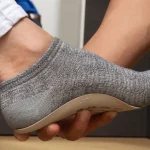A Seattle-based law firm has begun soliciting clients for a potential product liability lawsuits against GoPro Inc., claiming the company may have misled consumers by failing to disclose dangerous risks associated with its cameras and camera-mounting devices.
In a press release issued Tuesday, Hagens Berman said studies have shown that the cameras may interfere with avalanche beacons, and their use by mounting on helmets may lead to serious injury or death. It also cited media reports over the weekend that identified GoPro as the camera brand worn by Michael Schumacher, a world-renowned retired Formula-1 racing driver,
when he sustained a catastrophic brain injury after a skiing accident in
December. In the wake of the accident, which broke Schumacher’s helmet in half, accident investigators are reportedly testing whether helmet cameras ski helmets undermine the integrity of ski helmets.
“If you or a loved one has been injured or killed while using a GoPro helmet-mounted camera or has been involved in an avalanche or avalanche rescue effort while using a GoPro camera, Hagens Berman would like to hear from you,” reads the release. “If you purchased a GoPro camera, but are no longer comfortable using it as intended because of concerns about these or other safety issues, the firm would like to hear from you.
There are reputable sources indicating that GoPro cameras may interfere with avalanche beacons, making them a potential hazard to those who use the cameras while participating in snow sports, said Steve Berman, managing partner of Hagens Berman.
One report suggests that the cameras may interfere not only with the transmission of the rescue signal, but also with the ability of searcher equipment to locate an avalanche victim.
GoPro intends and markets its cameras for use by extreme snow athletes who are often in avalanche-prone areas using avalanche beacons, yet nowhere in its advertising or packaging does GoPro mention that the cameras could interfere with beacons, said Tom Loeser, Hagens Berman partner leading the GoPro investigation. The only mention of interference in the user manual is on page 67 of the 68-page manual under the heading ‘Using the WiFi Remote. But even there, there is no direct warning that the GoPro will degrade and may delay search and recovery. The problem is exacerbated by the fact that GoPro sells its cameras with a chest harness that would place the camera directly over the location where many athletes wear their beacons.
Loeser added, Slowing avalanche recovery by mere minutes can be the difference between rescue and tragedy. Studies have shown that the likelihood of survival in an avalanche drops from 90 percent if found in the first 15 minutes, to just 30 percent at 30 minutes.
In addition to the potential interference with avalanche beacons, Hagens Berman is investigating whether helmet-mounted GoPro cameras pose a risk of injury to those wearing helmets during sports.















